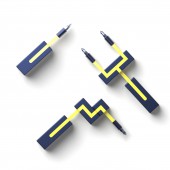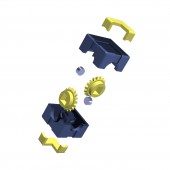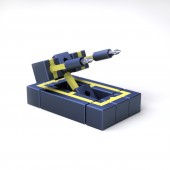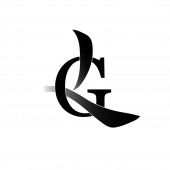Pixel Modular Toolset by Guorong Luo |
Home > Winners > #77763 |
 |
|
||||
| DESIGN DETAILS | |||||
| DESIGN NAME: Pixel PRIMARY FUNCTION: Modular Toolset INSPIRATION: Most of the DIY enthusiasts enjoy DIY because they like playing with things. Tool, like a kind of 'media', is often defined as an object that people use to perform other work. However, as DIY is affected by the wave of Do it for me, there are fewer and fewer scenes where modern people use tools, and tools are gradually being forgotten in the corners of the home. What if we create a scenario in which tool can be used directly by itself so that people can 'play' tools like toys? UNIQUE PROPERTIES / PROJECT DESCRIPTION: Pixel is a modular toolset designed for DIY enthusiasts. Its different function modules not only meet daily needs but also provide infinite possibilities for splicing, allowing users to enjoy the pleasure of creation. The designer tried to create a scenario in which tool can be used directly by itself so that people can 'play' tools like toys. Instead of starting from the existing user experience, he aimed at creating a new experience that allows people to enjoy the process of 'playing tools'. OPERATION / FLOW / INTERACTION: In order to achieve those interesting and creative functions, Pixel contains a lot of mechanical structures inside. You can easily connect the basic modules like screwdriver tip, connection module and handle to make a simple screwdriver. At the next stage, you can play with different mechanical modules and DIY your own unique tool to perform certain interesting tasks. 90-degree drive module help to change the direction of the force. Transmission module modifies the relationship between speed and torque. 1 to 2 module enables you to screw two screws at once. And finally Easter eggs offer more possibilities for playing. PROJECT DURATION AND LOCATION: The project started in March 2018 in Shanghai and finished in June 2018 in Shanghai, and was exhibited in the College of Design and Innovation graduation exhibition in Tongji University, Shanghai, China. |
PRODUCTION / REALIZATION TECHNOLOGY: Production technology: Die Casting or CNC for cube cases; Injection Moulding for gears; Materials: Anodized aluminium for cube cases which provides geek style; PA6 Nylon for gears which provides better mechanical property and lower noise; N52 Neodymium Magnets which provides stronger and easier connection; SPECIFICATIONS / TECHNICAL PROPERTIES: Basic Module Unit Size: Width 25 mm x Depth 25 mm x Height 25 mm. Other modules just doubled or tripled in one direction. TAGS: DIY, Tool, Toy, Critical Design, Modular Design, User Experience RESEARCH ABSTRACT: I conducted a trend and background research first and found out the main purpose of the DIY activity began to transform into a refined lifestyle but the tools still give people the inherent impression of mechanics, labour, complexity, and professionalism. By conducting on-hand tests on assembling DIY furniture, initial and expert interviews, I found out there are fewer and fewer scenes where modern people use tools. I used 3D printing to iterate prototypes and tested the real scenarios to ensure the reliability of the gear transmission and eventually got the final prototype. CHALLENGE: As this design not only tries to solve the problems but also challenges the concept of the tool itself and tries to inspire people. So How the narrative being told to people for them to easily understand became a really difficult challenge. And it's really hard to find out the proper way to challenge the perception of the 'DIY Tool'. In the previous scenes, tool, like a kind of 'media', is often defined as an object that people use to perform other work. Therefore, I tried to create a scenario in which tool can be used directly by itself so that people can 'play' tools like toys. The value of the Pixel is to create a catalyst for society to consider the concept of the 'tool', framed in an approachable, accessible design. It is a tool, an experience, and a form of self-expression. ADDED DATE: 2019-02-21 02:23:16 TEAM MEMBERS (1) : IMAGE CREDITS: Image #1-5: Creator Guorong Luo, 2018. |
||||
| Visit the following page to learn more: http://www.grluo.com | |||||
| AWARD DETAILS | |
 |
Pixel Modular Toolset by Guorong Luo is Winner in Hardware, Power and Hand Tools Design Category, 2018 - 2019.· Press Members: Login or Register to request an exclusive interview with Guorong Luo. · Click here to register inorder to view the profile and other works by Guorong Luo. |
| SOCIAL |
| + Add to Likes / Favorites | Send to My Email | Comment | Testimonials | View Press-Release | Press Kit |







